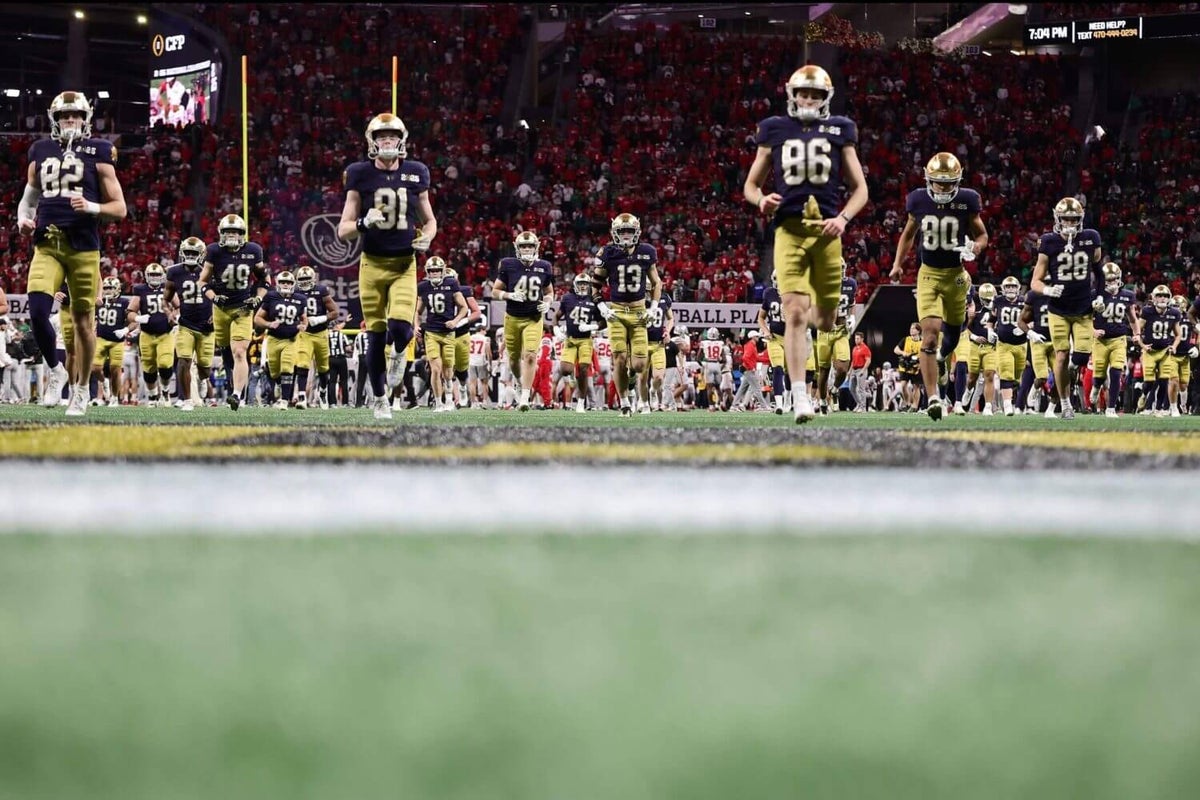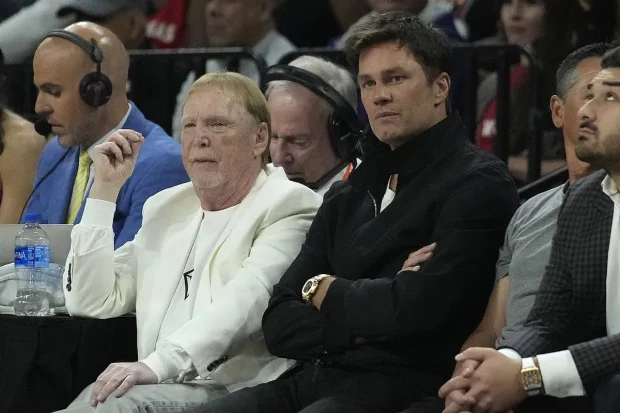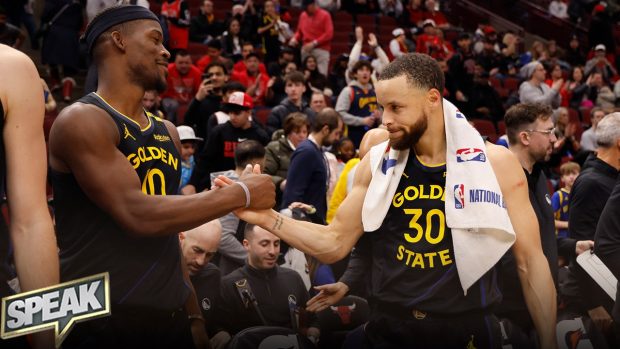

An ultimatum from a federal judge has lawyers for the NCAA and major college conferences hustling to preserve the landmark House v. NCAA settlement.
Judge Claudia Wilken issued an order last week stating that if the settlement parties cannot revise terms in a way that will prevent college athletes from losing roster spots due to the implementation of new roster limits, the $2.8 billion agreement, which resolves a trio of antitrust lawsuits against the NCAA and power conferences, will be denied approval.
Advertisement
Wilken gave the settlement parties two weeks to respond.
Prior to Wilken’s latest order, the NCAA and conference defendants had largely held firm in their refusal to modify the settlement they negotiated with plaintiff attorneys, which was agreed to in May 2024. But Wilken has made clear that if her concerns about roster limits are not addressed, she will sink the settlement and send the case to trial — an outcome that would likely be disastrous for the NCAA, and one its leaders are desperate to avoid.
“This settlement is not going to blow up over this,” an athletic director at a Power 4 school told The Athletic.
Several athletic directors and administrators were granted anonymity to speak freely about this latest bump in the road for the settlement, and all agreed that adjustments to the roster limits should not be a deal breaker.
But they also expressed a level of frustration that it took a scolding from Wilken for changes to be made. The judge had been raising a red flag over roster limits since the preliminary approval hearing in September. After hearing from objectors to the settlement on April 7 — including two athletes who were facing cuts — Wilken advised defendants from the bench to address the concerns. She suggested either phasing or “grandfathering” any athletes with existing roster spots.
“Basically, I think it is a good settlement — don’t quote me,” Wilken said at the April 7 hearing. “I think it is worth pursuing and I think some of these things could be fixed if people tried to fix them, and that it would be worth their while to try to fix them.”
Instead of suggesting changes, settlement lawyers filed a brief a week later further explaining the reasons for the limits.
“We could have spun this into a win, that we were doing the right thing,” one of the athletic directors told The Athletic. “Now, it looks like we’re being forced to do the right thing again.”
Advertisement
The roster limits as proposed in the settlement have risen from in-the-weeds detail to topic of national attention because of the large number of athletes who could lose their spot on a college roster as a result. Currently, teams have a capped number of scholarships they can offer — 85 in football, 13 in men’s and women’s basketball, 12 in softball — which can be distributed as full or partial scholarships. Those teams can also have additional non-scholarship athletes on the roster, known as walk-ons. The roster limits would replace scholarship limits for any Division I school that opts into the terms of the settlement.
The new roster limits would allow schools to provide a scholarship for every spot on the roster, and every sport would receive an increase in available scholarships. However, the total roster number would be capped by that roster limit. In football, the new roster limit of 105 increases the number of available scholarships by 20, but most Division I football programs carry around 120 players, meaning teams would have to make cuts to meet the 105 cap.
The NCAA’s push for roster limits is designed to require uniform roster sizes for every school across a sport, in concert with the larger settlement attempting to restore some competitive balance to college athletics. And ideally for the NCAA, the roster limits would protect against legal action from athletes who might argue against rules preventing them from being offered a scholarship.
Except those limits have also led to hundreds, maybe even thousands, of athletes losing their spots on teams. Schools needed to start trimming rosters before the settlement was given final approval in order to give their athletes time to weigh their options, including transferring in hopes of finding a spot at a different school. The settlement agreement guarantees that athletes currently on scholarship will remain on scholarship even if they are no longer part of a team, but most of the athletes being cut are walk-ons or have a minimal partial scholarship.
Wilken wrote in her order that the court can approve the settlement only if it is “fair, reasonable and adequate,” which she stipulated means it must treat the impacted college athletes equitably.
Advertisement
“Because the settlement agreement is not fair and reasonable to the significant number of class members whose roster spots will be or have been taken away … the Court cannot approve the settlement agreement in its current form,” Wilken wrote.
In issuing the two-week deadline, Wilken also required the settlement parties to consult with certain objectors on a possible solution. Any changes to the terms of the deal will need independent approval from the boards of the NCAA, ACC, Big Ten, Big 12, SEC and Pac-12.
The nuances between phasing in the roster limits and a full grandfathering of current athletes are potentially significant.
A phase-in would likely increase roster limits, particularly in sports with the highest number of walk-ons, while giving athletes more time and options to prepare for the full implementation. But the current lack of uniformity across roster sizes means different schools and sports would be impacted differently. Grandfathering would protect current athletes in all sports from being cut due to the roster limits for the length of their eligibility.
Schools would prefer to implement the proposed roster limits sooner rather than later. While non-scholarship athletes come at a low cost compared to those on scholarship, most schools have already budgeted to the limits.
Expect lawyers for the defendants to work quickly and try to avoid taking the full two weeks to respond, which stretches until May 7. The revenue-sharing system that is part of the settlement agreement is supposed to go into effect this summer. Power conference schools will be permitted to direct up to $20.5 million to their athletes in Year 1 under the settlement terms.
Other elements of the deal, such as the $2.8 billion in backpay damages; a clearinghouse for third-party name, image and likeness deals; and the creation of a new regulatory body outside the NCAA; can’t be made operational until the settlement is approved.
Advertisement
Wilken indicated in her latest order that the eventual implementation of roster limits would not keep her from approving the settlement, but rather that she was troubled by the fact that schools had already begun cutting athletes, with more to follow.
The potential doomsday scenario — in which the roster limit issue doesn’t get resolved and the settlement is denied — is not one that any of the administrators The Athletic spoke to have seriously considered. Each of them expressed confidence that this problem would get resolved and that the settlement was too important and had come too far to get derailed at the eleventh hour.
That’s because a denial would send the entire industry of college sports into chaos. Every preliminary revenue sharing agreement that schools signed with athletes would get brought under legal scrutiny. Some schools would still be able to directly share revenue due to state name, image and likeness (NIL) laws, which would likely force the NCAA to intervene with a waiver allowing other schools to do the same.
More calamitous would be the looming trial, or trials, in lieu of the settlement, which could threaten to bankrupt the NCAA if it ultimately lost in court.
Resistant as the NCAA has been to adjusting the settlement, that grisly alternative is why it worked toward a compromise in the first place, and it’s an outcome the organization cannot afford to risk.
(Photo: Carmen Mandato / Getty Images)
This news was originally published on this post .










Be the first to leave a comment